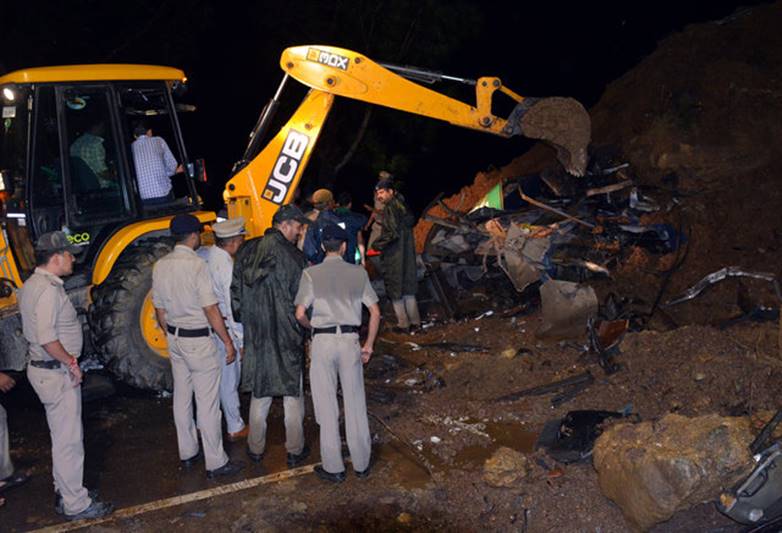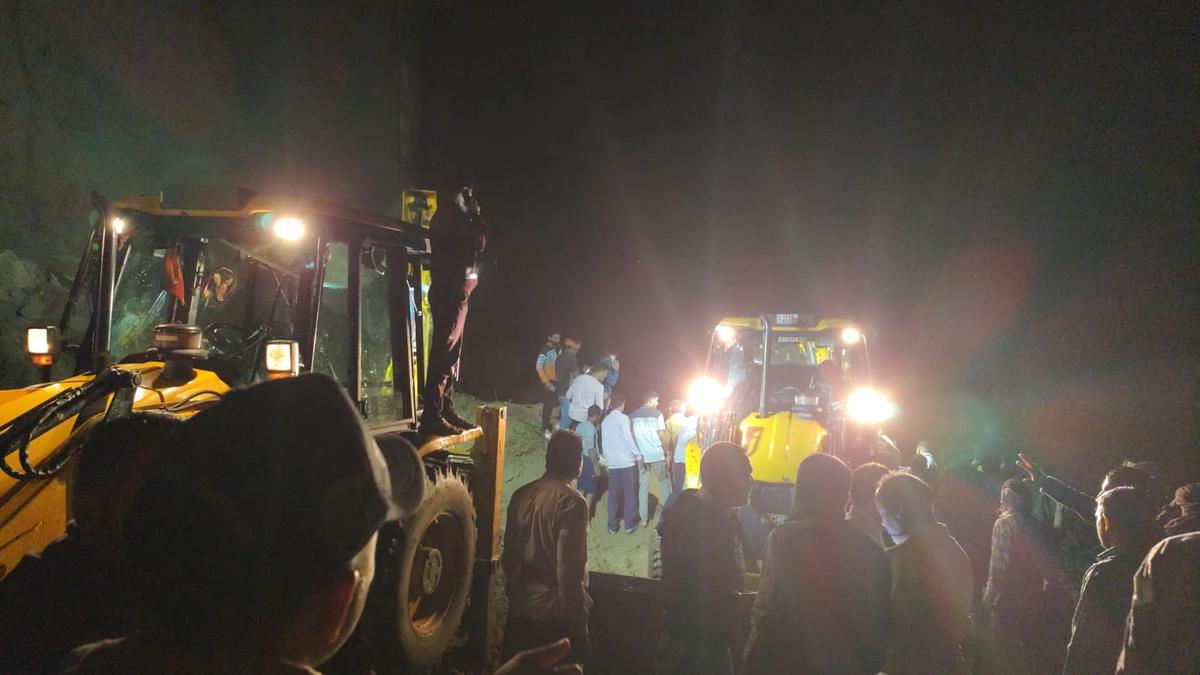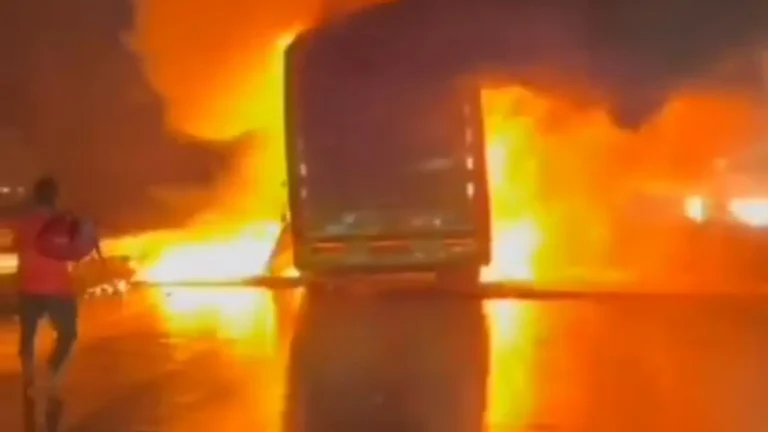Bilaspur, Himachal Pradesh October 7, 2025:
A tragic landslide in Himachal Landslide, Bilaspur district has claimed at least 15 lives, after a passenger bus was suddenly hit by a massive landslip early Tuesday morning. The incident, triggered by continuous heavy rainfall in the region, has left several people injured, and dozens are still feared trapped beneath the rubble.
Rescue operations are ongoing in challenging terrain, and officials fear the death toll could rise.
What Happened?
According to local authorities,Himachal Landslide incident took place around 8:45 AM near the Kandrour area on the National Highway-205, a steep and landslide-prone stretch that connects Bilaspur to the rest of the state.
The private bus was en route from Reckong Peo to Chandigarh, carrying over 30 passengers when a huge portion of the hillside gave way. Within seconds, rocks, soil, and uprooted trees came crashing down on the vehicle, crushing its roof and burying it partially under debris.
Eyewitnesses described the moment as sudden and terrifying.
“There was a loud rumble and then complete chaos. The bus was moving slowly, but the mountain just fell on it,” said Ramesh Thakur, a local shopkeeper who witnessed the incident.
Immediate Aftermath and Rescue Efforts
Local residents, along with the police, fire services, and disaster response teams, quickly rushed to the site. The National Disaster Response Force (NDRF) was called in for intensive rescue operations using heavy machinery and earth movers.
So far,In Himachal Landslide 15 bodies have been recovered, and over 10 injured passengers have been taken to Bilaspur Regional Hospital, some in critical condition. Around 5 to 7 people are still believed to be trapped, and operations are continuing through the night.
The road has been closed to all traffic, and authorities are urging travelers to avoid the area until further notice.
Heavy Rainfall to Blame?
The landslide is believed to have been caused by days of non-stop heavy rainfall, which has loosened soil and rock formations across the hilly state. Himachal Landslide is prone to such natural disasters, especially during the monsoon and post-monsoon months.
Experts warn that climate change and unplanned construction in hill regions are making such incidents more frequent and dangerous.
“The soil saturation level had reached a tipping point. With steep slopes and weak rock layers, it takes just one trigger for disaster to strike,” said Dr. Neha Sharma, a geologist based in Shimla.
Chief Minister’s Response
Himachal Pradesh Chief Minister Sukhvinder Singh Sukhu expressed his grief over the incident and assured the public that rescue operations are being conducted on a war footing.
He also announced financial compensation of ₹5 lakh to the families of the deceased and assured that the state government would cover all medical expenses for the injured.
“This is a dark day for Himachal. Our priority is to save as many lives as possible. All available resources have been deployed,” the CM stated in a press briefing.
Infrastructure and Safety Concerns in Hill States

The Bilaspur , Himachal Landslide tragedy has once again raised tough questions about infrastructure safety and disaster preparedness in hill states like Himachal Pradesh. Roads carved into unstable mountainsides, frequent deforestation, and rampant construction have all contributed to increasing the risk of landslides.
Locals and environmentalists have long warned against overdevelopment in fragile ecosystems. According to reports, this particular stretch of road has witnessed multiple smaller landslides in recent years – but no substantial mitigation efforts were made.
What’s Being Done to Prevent Future Tragedies?
Here are some actions that experts and activists say are urgently needed to prevent such incidents in the future:
1. Landslide Early Warning Systems
Installation of geotechnical sensors and real-time monitoring systems to alert authorities of slope instability before a disaster occurs.
2. Proper Drainage and Retaining Walls
Engineering solutions such as proper water drainage, slope reinforcement, and retaining walls are essential to prevent erosion and slips.
3. Stricter Construction Rules
Strict guidelines on construction activity in landslide-prone zones must be implemented and enforced to prevent unregulated development.
4. Climate-Resilient Planning
Governments must incorporate climate change data into urban planning and disaster risk reduction strategies.
Local Community Reactions
The Himachal Landslide tragedy has left the local community in shock and mourning. Schools in the area have been closed for the day, and religious prayers are being held for the victims.
Several families are still waiting at the rescue site, hoping for news of their loved ones.
“My brother was on that bus. We still haven’t heard anything,” said one tearful relative.
Conclusion
The Bilaspur, Himachal Landslide is a grim reminder of nature’s power – and of the vulnerabilities created by human negligence. As rescue teams continue their efforts, the focus must also shift to long-term solutions that protect lives in hilly regions like Himachal Pradesh.
Better infrastructure, smarter planning, and stronger disaster response systems can no longer be delayed. The hills of Himachal are beautiful – but they are also fragile. Unless action is taken now, more such tragedies may follow.









